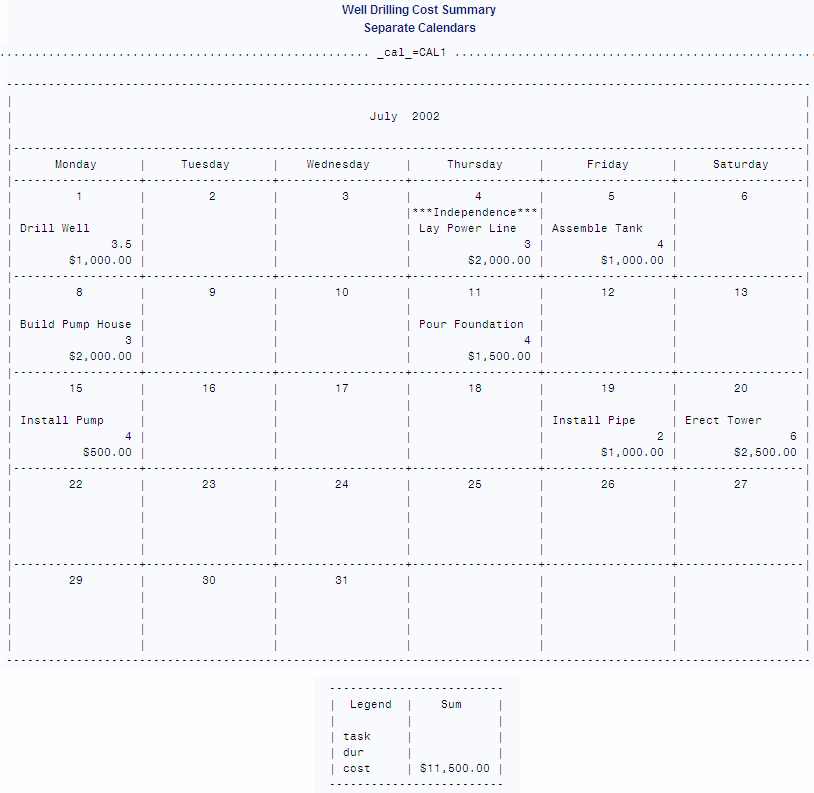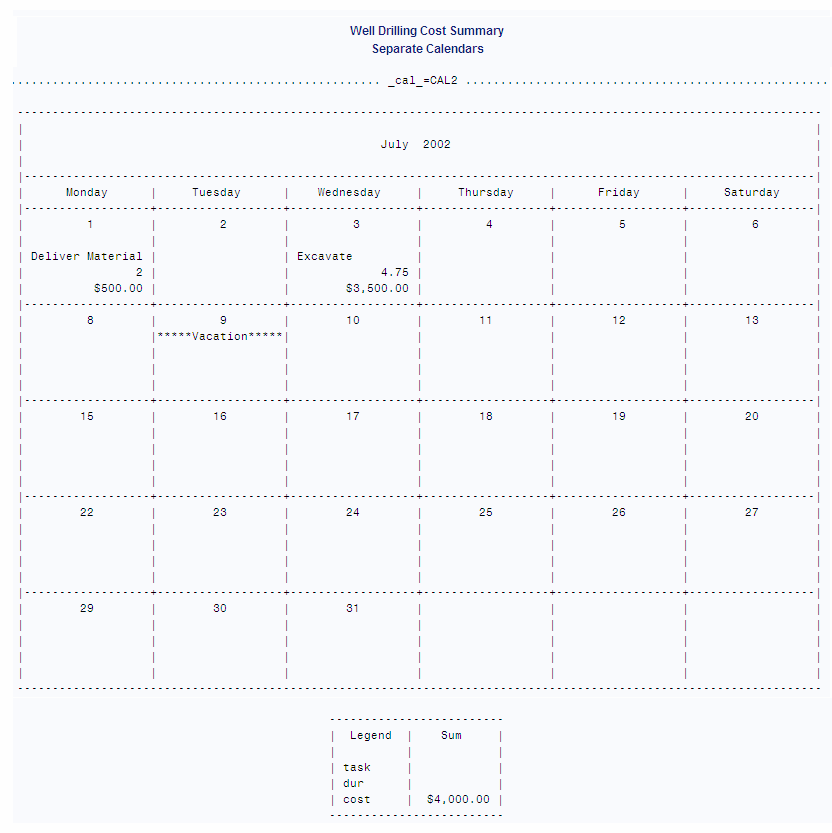CALENDAR Procedure
- Syntax

- Overview
- Concepts
- Results
- Examples
 Schedule Calendar with Holidays: 5-Day DefaultSchedule Calendar Containing Multiple CalendarsMultiple Schedule Calendars with Atypical Work Shifts (Separated Output)Multiple Schedule Calendars with Atypical Work Shifts (Combined and Mixed Output) Schedule Calendar, Blank or with HolidaysCalculating a Schedule Based on Completion of Predecessor TasksSummary Calendar with MEAN Values by ObservationMultiple Summary Calendars with Atypical Work Shifts (Separated Output)
Schedule Calendar with Holidays: 5-Day DefaultSchedule Calendar Containing Multiple CalendarsMultiple Schedule Calendars with Atypical Work Shifts (Separated Output)Multiple Schedule Calendars with Atypical Work Shifts (Combined and Mixed Output) Schedule Calendar, Blank or with HolidaysCalculating a Schedule Based on Completion of Predecessor TasksSummary Calendar with MEAN Values by ObservationMultiple Summary Calendars with Atypical Work Shifts (Separated Output)
Example 8: Multiple Summary Calendars with Atypical Work Shifts (Separated Output)
| Features: |
|
| Data sets: | WELL.ACT |
Producing Different Output for Multiple Calendars
Program
libname well
'SAS-library';
run;
proc sort data=well.act; by _cal_ date; run;
options formchar="|----|+|---+=|-/\<>*" linesize=132;
proc calendar data=well.act
holidata=well.hol
datetime legend;
calid _cal_ / output=separate;
start date; holistart date; holivar holiday;
sum cost / format=dollar10.2;
outstart Monday; outfin Saturday;
title 'Well Drilling Cost Summary'; title2 'Separate Calendars'; format cost dollar10.2; run;
Program Description
Sort the activities data set by the variables containing
the calendar identification and the starting date, respectively.
Set the FORMCHAR option.Setting
FORMCHAR to this exact string renders better HTML output when it is
viewed outside of the SAS environment where SAS Monospace fonts are
not available. LINESIZE needs to be set in this example to prevent
truncating data in the output.
Create the summary calendar. DATA=
identifies the activities data set; HOLIDATA= identifies the holidays
data set; CALDATA= identifies the calendar data set; WORKDATA= identifies
the workdays data set. DATETIME specifies that the variable specified
with the START statement contains a SAS datetime value. LEGEND prints
text that identifies the variables.
Print each calendar on a separate page. The CALID statement specifies that the _CAL_ variable
identifies calendars. OUTPUT=SEPARATE prints information for each
calendar on separate pages.
Specify an activity start date variable and retrieve holiday
information. The START statement specifies
the variable in the activities data set that contains the activity
starting date. The HOLISTART and HOLIVAR statements specify the variables
in the holidays data set that contain the start date and name of each
holiday, respectively. These statements are required when you use
a holidays data set.
Calculate sum values. The
SUM statement totals the COST variable for all observations in each
calendar.

